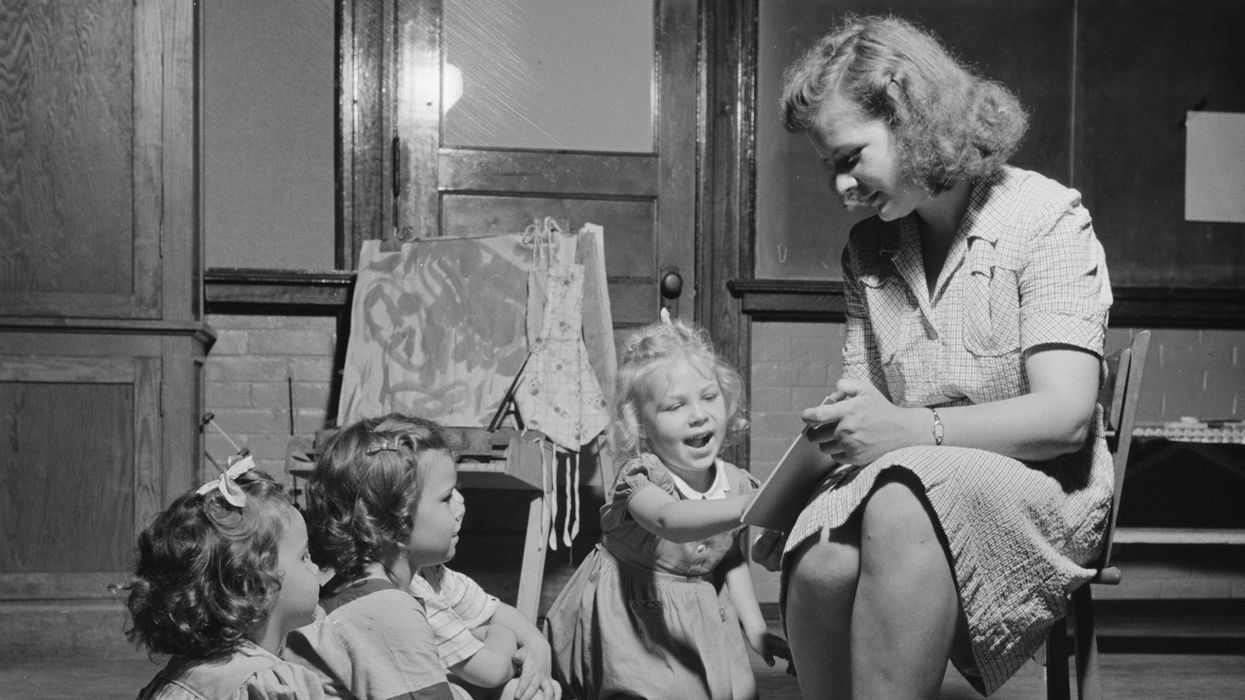(CNN) — During World War II, the federal government spent more than $1 billion in today's dollars to help provide affordable child care for mothers who entered the workforce in droves to support the war effort.
Child care centers in more than635 communities across the country received funds. Many stayed open late and on weekends to match workers' factory schedules.
The World War II-era child care program was the first and only federally administered child care for all families, regardless of their income — a qualifying factor for many of today's federal child care subsidies.
But the federal funding abruptly expired when the war ended, and now, roughly 80 years later, many American families struggle to find affordable, high-quality child care that meets their needs. The private market simply does not provide adequate child care options.
President Joe Biden, who could not get his universal pre-K proposal through Congress, is now taking a different, more limited approach. He's requiring companies applying for certain federal grants meant to boost domestic manufacturing of semiconductor chips to also have a plan to provide access to affordable child care for their workers.
The policy is designed to make sure workers as well as companies benefit from this federal investment, said Betsey Stevenson, a professor of public policy and economics at the University of Michigan who previously served as an adviser to former President Barack Obama.
"Another way to think about it is that we really need government involved in child care," she said.
'Rosie the Riveter' leads to nationwide child care
As men went overseas to fight in World War II and the federal government's "Rosie the Riveter" campaign encouraged women to join the workforce, it became clear that child care was sorely needed.
The money came from the National Defense Housing Act of 1940, more widely known as the Lanham Act, which was meant to fund infrastructure projects deemed critical to the war effort. The Federal Works Agency decided in 1942 that child care services fell in that category.
The FWA allowed the funds to be used for the construction and maintenance of child care facilities, to train and pay teachers, and to provide meals for communities that were directly involved in the war effort. The child care money was disbursed to centers in nearly every state.
Parents typically had to chip in, paying less than $1 a day for the child care services.
"It's quite remarkable. The country essentially stood up an entire child care program in a matter of months," said Chris Herbst, an associate professor at Arizona State University who published a study in 2013 on the Lanham Act child care program.
Herbst found that mothers' paid work increased substantially following the child care subsidies. He also found that those mothers were more likely to be working 20 years later.
The program had a long-term impact on the children, too, whom Herbst found to be more likely to achieve higher levels of education and to be employed in the future, and less likely to receive other kinds of government aid throughout their lives.
Biden's CHIPS law
Currently, the federal government subsidizes child care for low-income families through programs like the Child Care and Development Fund and Head Start programs.
But many families still struggle to afford child care, and those that can afford it have trouble finding it. After the Covid-19 pandemic dealt a huge blow to the child care sector, the federal government provided funds to help keep child care centers operating. But long-lasting, sweeping reform has repeatedly failed to pass Congress.
Last year, lawmakers passed the CHIPS and Science Act, which invests more than $200 billion over five years to help the US bring back semiconductor chip manufacturing from places like China. The law is not specifically about child care, but now the Commerce Department is requiring some companies to also provide access to child care in order to be eligible for the money.
The CHIPS law creates incentives for companies to build, expand and modernize US facilities and equipment and is already spurring private investment. Wolfspeed, a North Carolina semiconductor manufacturer that Biden visited late last month, announced a $5 billion investment to build a facility, expecting to create 1,800 jobs there.
In February, the Biden administration added the child care provision. Companies seeking certain grants over $150 million must also submit a plan to provide their facility and construction workers with access to affordable, high-quality child care, according to the government's guidance.
"The first thing I thought was that this was 'Lanham Part Two,'" said Kathryn Edwards, an adjunct economist at the RAND Corporation.
"We want to make sure we have workers for this critical industry, so we are going to have child care," she said.
Like the Lanham Act, the child care program is supported by a law primarily focused on industrial policy. But the CHIPS law is putting the onus on the employer to provide the service, rather than deliver funding directly to local child care centers.
"Here's the truth: CHIPS won't be successful unless we expand the labor force. We can't do that without affordable child care," Commerce Secretary Gina Raimondo tweeted in February.
Herbst believes it could be a few years before workers see how the child care requirement plays out and how each employer decides to structure the benefit. They may choose to provide child care on-site or offer employees child care vouchers.
"The administration has, I think, a commitment to child care. I think the question is whether this is the best way to manifest that commitment," Herbst said.
The-CNN-Wire
™ & © 2023 Cable News Network, Inc., a Warner Bros. Discovery Company. All rights reserved.

















































